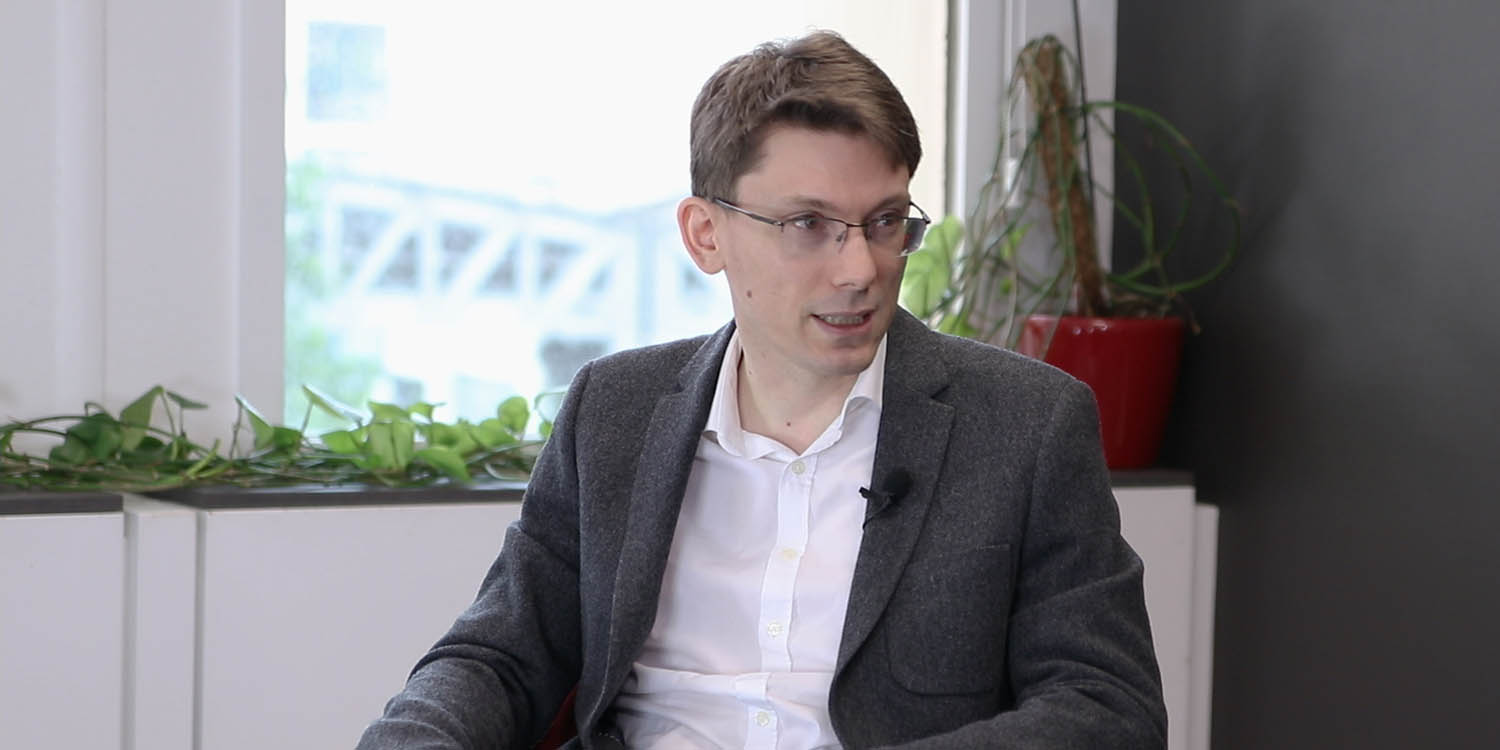00:00:04 Interview location and introduction of Chrystelle Gauthier.
00:01:31 La Redoute’s history and reputation in fashion.
00:02:36 Understanding product color references and annual changes.
00:03:24 On the importance of pricing in fashion.
00:04:25 Perception of the fashion industry in media.
00:05:26 Description of automated and numerical Lokad tool.
00:06:23 Predictions for the future of fashion industry.
00:07:33 The necessity of data tools for managing references.
00:08:10 The interplay between fashion and data; closing remarks.
Summary
In an interview with Lokad’s founder, Joannes Vermorel, Chrystelle Gauthier, the Fashion Segment Director at La Redoute, discussed her role and the company’s operations. Gauthier oversees global apparel assortment, emphasizing not just profitability but also meeting customer needs. La Redoute’s large portfolio includes home and fashion products with a strong emphasis on corporate social responsibility. Despite the challenges posed by the high rate of product renewal and market unpredictability, Gauthier is committed to serving a wide range of customers. Gauthier and Vermorel briefly discussed a pricing initiative between La Redoute and Lokad, emphasizing the significance of pricing data management. She also mentioned the quantitative nature of their teams, which consist mainly of engineers. Gauthier pointed to an increasingly complex future for the fashion industry, stressing the importance of agility, adaptability, and data management.
Extended Summary
The discussion is taking place in Roubaix, on the logistics platform of La Redoute, a well-known French company and a client of Lokad, a supply chain optimization firm. The interview is conducted by Joannes Vermorel, Lokad’s founder, who is speaking with Chrystelle Gauthier, Fashion Segment Director at La Redoute.
Gauthier shares her role at La Redoute, which she joined in 2019. As the Fashion Business Director, she oversees the global apparel assortment. This encompasses managing both profitability and business operations, particularly in France. Her focus is not only on the financial side but also on the continuous flow of products to meet customers’ needs.
Gauthier emphasizes the complexity of her role. Even during regular times, she needs to handle collections and manage a high rate of product renewal. The past few years have added to the challenge due to the unpredictable nature of the market. Nevertheless, she is committed to ensuring customers are consistently served with a wide variety of products.
She explains that La Redoute has a long-standing reputation in the international fashion scene, especially in France. The company is unique because it offers both home and fashion products. It has a large portfolio of both external and internal brands, the latter being family-focused with a strong emphasis on corporate social responsibility. The brand also prides itself on its chic, stylish, and affordable prices, making it accessible to a wide range of families.
Gauthier gives a sense of the scale of the operations at La Redoute. The company deals with thousands of products, making it hard for many to grasp the full extent of their business. They introduce fresh styles annually, with more than 18,000 color references. Moreover, they renew their assortment by 70 to 80 percent each year, indicating a rapid turnover of products.
As the conversation proceeds, Vermorel mentions that La Redoute and Lokad began a pricing initiative some time ago. Vermorel has a specific approach to pricing, but the conversation does not provide further details on this aspect. This transcript serves as a glimpse into the management and operations of La Redoute’s fashion segment and the challenges faced in managing a vast product assortment.
Vermorel’s perspective on pricing is highly mathematical and quantitative. He emphasizes that his method is particularly educative to his audience, as they are presented with a mathematical theory through his lectures. However, he expresses interest in Gauthier’s perspective, curious about the pricing strategies and thought processes behind pricing in the fashion industry.
Gauthier explains that pricing is one of the critical factors influencing customer decisions, and its significance is expected to persist in the years to come. Managing pricing data is a significant challenge, given the factors that influence it, such as evolving legislation, promotional pressure, and balancing margins and product flow. Gauthier explains that La Redoute has formed a partnership with Lokad to aid in managing this delicate data.
Contrary to the public perception that fashion is solely about creativity and design, Gauthier points out that their teams are quantitative and mainly consist of engineers. They’ve integrated highly quantitative numerical techniques into their workflows and processes. Despite being a challenge, it was a necessary change to maintain their position as the European leader in e-commerce.
According to Gauthier, the tool they built with Lokad is based on human input, implying the importance of human involvement in their process. Initially, they spent time understanding calculations and distributions, and now they’re more in a phase of running the processes, with teams supervising and adjusting the data that Lokad doesn’t have.
Looking ahead, Gauthier expects the fashion industry to face increasing complexity. The environment is changing rapidly, making agility, adaptability, and efficient simulation essential for the future. Data is seen as the key to managing these changes, with tools necessary to handle the volume of data required to keep up with the market’s ups and downs.
Finally, when asked about what qualities Gauthier looks for in new hires, she emphasizes the importance of curiosity, rigor, open-mindedness, audacity, and attentiveness to market developments. Even though they’re a fashion company, they highly value data analysis skills, since the success of their assortment monitoring and other key performance indicators (KPIs) heavily depends on precise data management.
The interview concludes with Gauthier expressing gratitude for the opportunity to share her thoughts and experiences, thereby highlighting the symbiosis between data and fashion, and the evolving intricacies of this dynamic industry.
Full Transcript
Joannes Vermorel: We are not in the Lokad office today but in Roubaix. We are on the logistics platform of La Redoute. La Redoute has been a client of Lokad for quite a while, and I am pleased to be invited today by Chrystelle Gautier. Chrystelle, you are the director for Apparel and Fashion segment. Could you tell us a little bit about your current position? What do you do and manage?
Chrystelle Gauthier: Yes, I joined La Redoute in 2019, and I’m the Business Director for Fashion. I’m responsible for the assortment of apparel globally. I manage the profitability and the business in France, especially for the Apparel and Fashion segment. It’s actually quite complex.
Joannes Vermorel: Obviously, there is a period with the last couple of years where it has been slightly insane, but even in regular times, you have collections. There’s a high rate of renewal, and you also manage a large platform. Could you present us with some key challenges you face to keep apparel flowing and customers being served?
Chrystelle Gauthier: First, we have our historical presence in fashion globally at La Redoute. We are well known in France and internationally. We are a unique platform with home and fashion as our two pillars. We propose to the customer a large portfolio of external and internal brands dedicated to families. We have a strong positioning in terms of CSR with chic references style and affordable prices to be accessible to the whole family.
Joannes Vermorel: In terms of orders of magnitude, obviously, we’re talking about thousands of products. Could you give us a few numbers for the audience to grasp the scale of the challenge?
Chrystelle Gauthier: We have a lot of fresh apparel, more than 18,000 color references a year. And most importantly, we renew the assortment between 70 and 80 percent a year.
Joannes Vermorel: Lokad and La Redoute started a pricing initiative together a while back. I have my own approach on pricing, which is more mathematical and quantitative. I would be very interested to have your perspective on the pricing strategy or thinking that goes into pricing for fashion at large.
Chrystelle Gauthier: Prices remain one of the most important criteria of choice for customers. It’s going to be maintained in the following years, so we have a challenge to manage this sensitive data. We are happy to have built a partnership with Lokad to help us manage very priceless data. We have to consider many factors such as the evolution of legislation, promotional pressure, managing the margin, and managing the product flow. So, we need a tool to manage all these references and stakes globally.
Joannes Vermorel: The image we often see in the media about fashion is that it’s all about creativity and design. It’s perceived as a domain for insightful people, often blinding others. Yet, my own teams are very much quantitative, they are engineers. We’ve introduced in your workflows, in your processes, elements of fairly quantitative numerical recipes. I surmise that it was quite a challenge to manage. La Redoute has over the decades reinvented itself over and over to become the European leader in e-commerce that it is today. Could you give us a few words from your perspective about this sort of conduct of change that happened with the introduction of quantitative techniques, not necessarily AI, but at the very least something that was very numerical in nature and automated to some extent?
Chrystelle Gauthier: With Lokad, we have built a tool that was based on human input. It’s important to note that it’s based on 100 percent human input, boosted in a machine. At the beginning, we had brief times in a construction mode with explanations of calculation, distribution, and iterations. Now, we are more in the run phase with humans and teams that are on supervision. The data that come, they only come to adjust the information that Lokad can’t know. For me, it’s a partnership between data and human all the time.
Joannes Vermorel: Predicting the future is incredibly difficult, especially in these times, but what do you see for the decade to come for fashion at large? Do you see more complexity, less complexity, more or less data? What is the overall trend in terms of evolution of changes?
Chrystelle Gauthier: The environment is changing more and more quickly, and a big challenge for the future is to be agile, adaptable, and make simulations more pertinent and efficient. I’m convinced that data is key for the future. We have to manage and pilot the data as best as we can to adapt to the ups and downs of the market, and have the best view we can regarding our margin, our product flow. We manage several thousand references, which isn’t possible without a tool with data.
Joannes Vermorel: In closing, what do you seek in terms of maybe top qualities for the people that you’re hiring? I’m asking this question because we might have young, talented people in our audience with a technical background. They may not see themselves going into fashion, yet it appears there are opportunities. What qualities do you seek to decide to hire someone or not?
Chrystelle Gauthier: First of all, don’t forget that even though we speak about fashion, it’s always linked with data because we need to monitor the assortment. Success isn’t possible without a very precise monitoring of all the KPIs. So be curious, be rigorous, be open-minded, be audacious, and be attentive to all the developments of the market in order to adapt and to be agile regarding the environment. Thank you very much for having me today. It’s a pleasure.


